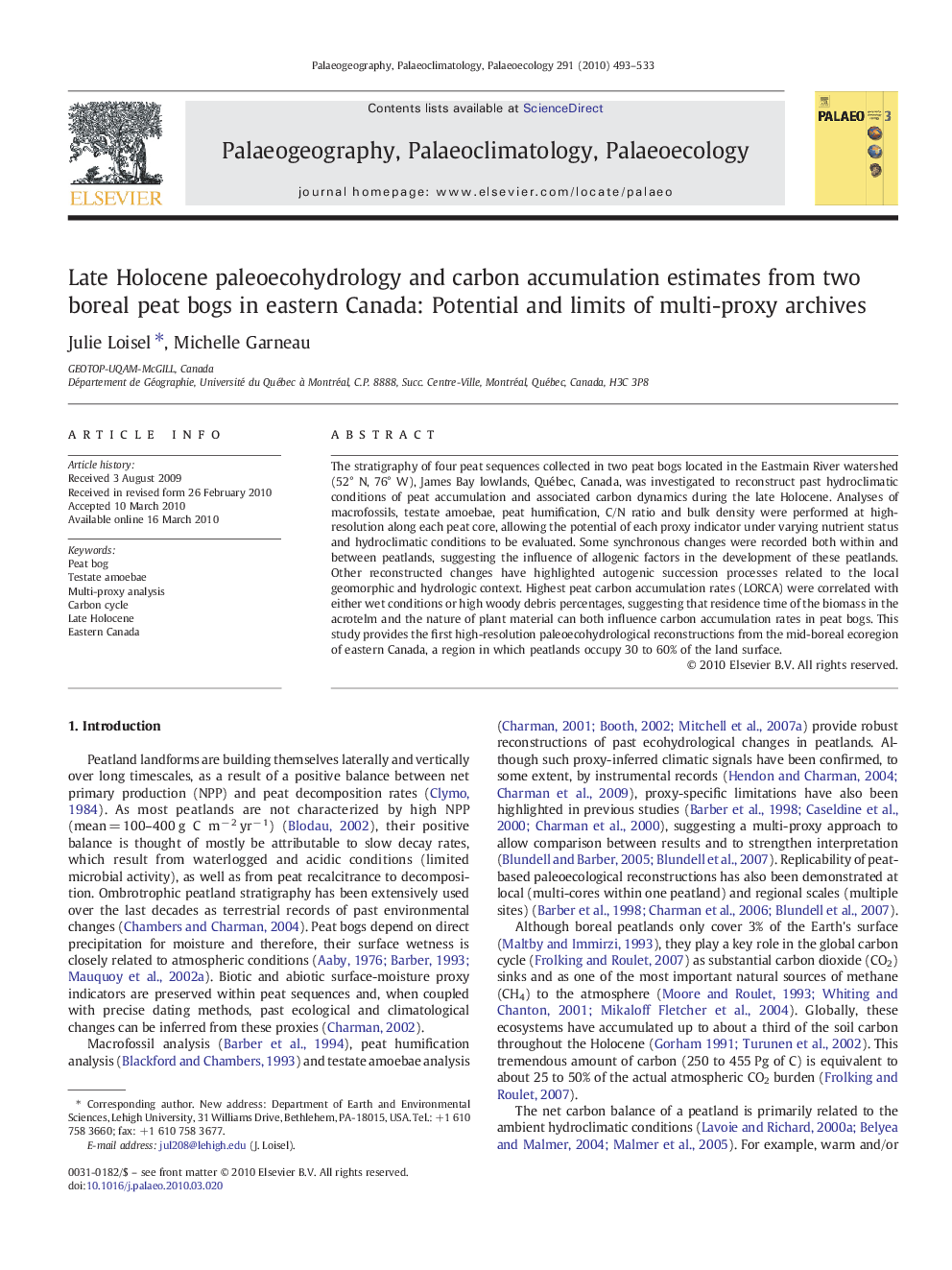| Article ID | Journal | Published Year | Pages | File Type |
|---|---|---|---|---|
| 4467767 | Palaeogeography, Palaeoclimatology, Palaeoecology | 2010 | 41 Pages |
The stratigraphy of four peat sequences collected in two peat bogs located in the Eastmain River watershed (52° N, 76° W), James Bay lowlands, Québec, Canada, was investigated to reconstruct past hydroclimatic conditions of peat accumulation and associated carbon dynamics during the late Holocene. Analyses of macrofossils, testate amoebae, peat humification, C/N ratio and bulk density were performed at high-resolution along each peat core, allowing the potential of each proxy indicator under varying nutrient status and hydroclimatic conditions to be evaluated. Some synchronous changes were recorded both within and between peatlands, suggesting the influence of allogenic factors in the development of these peatlands. Other reconstructed changes have highlighted autogenic succession processes related to the local geomorphic and hydrologic context. Highest peat carbon accumulation rates (LORCA) were correlated with either wet conditions or high woody debris percentages, suggesting that residence time of the biomass in the acrotelm and the nature of plant material can both influence carbon accumulation rates in peat bogs. This study provides the first high-resolution paleoecohydrological reconstructions from the mid-boreal ecoregion of eastern Canada, a region in which peatlands occupy 30 to 60% of the land surface.
